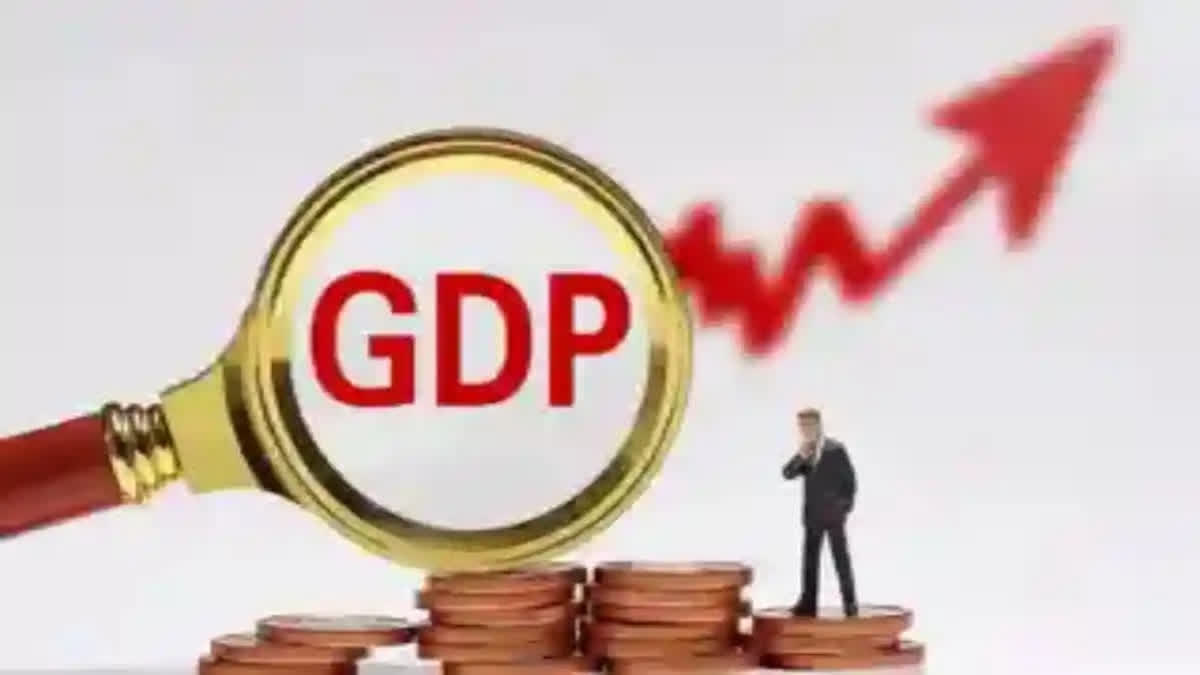New Delhi: India's economic growth rate is estimated to slip to a four-year low of 6.4 per cent in 2024-25, mainly on account of poor showing by the manufacturing and services sector, according to government data released on Tuesday. The gross domestic product (GDP) rate of 6.4 per cent will be the lowest since the Covid year (2020-21) when the country witnessed a negative growth of 5.8 per cent. It was 9.7 per cent in 2021-22; 7 per cent in 2022-23; and 8.2 per cent in the last fiscal ended March 2024.
The first advance estimates of National Income for 2024-25 released by the National Statistics Office (NSO) is lower than the 6.6 per cent projected by the Reserve Bank in December 2024. It is also a tad lower than the finance ministry's initial projection of 6.5-7 per cent. The advance estimates will be used in preparation for the Union Budget to be presented by Finance Minister Nirmala Sitharaman in the Lok Sabha on February 1.
The manufacturing sector output is expected to decelerate to 5.3 per cent from a high of 9.9 per cent recorded in the previous fiscal, NSO said in the first advance estimates of National Income for 2024-25. The services sector, comprising trade, hotels, transport and communications, is estimated to expand at 5.8 per cent against 6.4 per cent in 2023-24.
On the other hand, the farm sector is estimated to record a growth of 3.8 per cent in the current fiscal, up from 1.4 per cent in 2023-24. "Real GDP has been estimated to grow by 6.4 per cent in FY 2024-25 as compared to the growth rate of 8.2 per cent in Provisional Estimate (PE) of GDP for FY 2023-24," NSO said.
Nominal GDP has witnessed a growth rate of 9.7 per cent in 2024-25 over the growth rate of 9.6 per cent in 2023-24. According to the data, nominal GDP (GDP at current prices) is estimated to attain a level of Rs 324.11 lakh crore in the year 2024-25 against Rs 295.36 lakh crore in 2023-24, showing a growth rate of 9.7 per cent.
The size of the economy, as per the current estimates, is USD 3.8 trillion (@ Rs 85.7/USD) during 2024-25. Further, the nominal Gross Value Added (GVA) is estimated to attain a level of Rs 292.64 lakh crore in 2024-25 against Rs 267.62 lakh crore in 2023-24, showing a growth rate of 9.3 per cent.
Private Final Consumption Expenditure (PFCE) at constant prices has witnessed a growth rate of 7.3 per cent during 2024-25 over the growth rate of 4 per cent in the previous financial year.
Government Final Consumption Expenditure (GFCE) at Constant Prices has rebounded to a growth rate of 4.1 per cent compared to the growth rate of 2.5 per cent in the previous fiscal.
Chief Economist, CareEdge, Rajani Sinha told ETV Bharat that India's GDP growth for FY25, as per First Advance Estimate (FAE), has been reported at 6.4%, broadly in line with our expectations.
"As expected, growth is estimated to pick up in the second half of the year to 7%, surpassing the 6% growth recorded in H1. The concerning aspect of the data is the moderation in investment growth to 6.4% in FY25 from 9% in the previous year," she added.
According to Sinha, government investment had moderated in H1 due to election-related uncertainties but was expected to pick up in the second half.
"However, the data is not showing a pick-up, with investment growth in H2 estimated to remain around the same as H1. This means private investment is also not picking up meaningfully. The positive aspect is that private consumption is estimated to show strong growth of 7.3% in FY25 compared to a feeble growth of 4% in FY24. Consumption growth is estimated to accelerate in H2 compared to H1. Healthy agri growth and likely moderation in food inflation should help boost consumption in the months to come. Sustained consumption growth will also help pull in private investment," she added.
She said going forward, for FY26, we expect real GDP growth at 6.7%. "The most important monitorable would be a more broad-based pick up in consumption demand, especially amid reports of slowing urban consumption. The other critical aspect would be a meaningful pickup in private investment in the coming quarters. Additionally, monitoring headwinds to growth emerging from external sources like trade policy uncertainty, volatility in global markets, and geopolitical risks would be crucial," she added.
According to Aditi Nayar, Chief Economist and Head - Research & Outreach, ICRA Limited, NSO’s (FAE) for India’s GDP and GVA growth of 6.4% each in FY2025, is slightly lower than our forecast of 6.5% each, led by mining, manufacturing, and services.
"The NSO has effectively implicitly pegged the growth in the GDP and GVA for H2 FY2025 at 6.7% and 6.6%, respectively, a mild 10-20 bps lower than our projections for the same. While the NSO’s implicit H2 FY2025 projections seem reasonable, some of the sectoral numbers could report higher growth prints in H2 FY2025, in our view. For instance, the growth rates for the mining, manufacturing and THTCS segments are likely to exceed the assumed rates, given the dissipation of the adverse impact of excess rains that impacted growth in Q2 FY2025, the anticipated uptick in rural demand, and favourable base effect in some segments, she added.
ICRA also believes that the GDP growth in FY2026 will be crucially influenced by global uncertainties as well as domestic uncertainties, amidst considerable base effects. Benefitting from an anticipated capex push in the upcoming Budget, we project GDP growth at 6.5% in FY2026, added Nayar.



